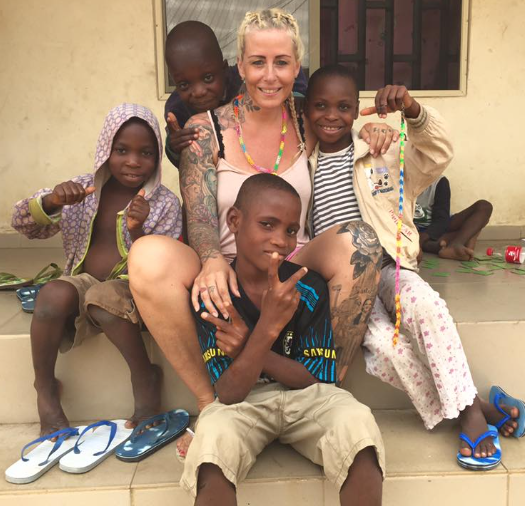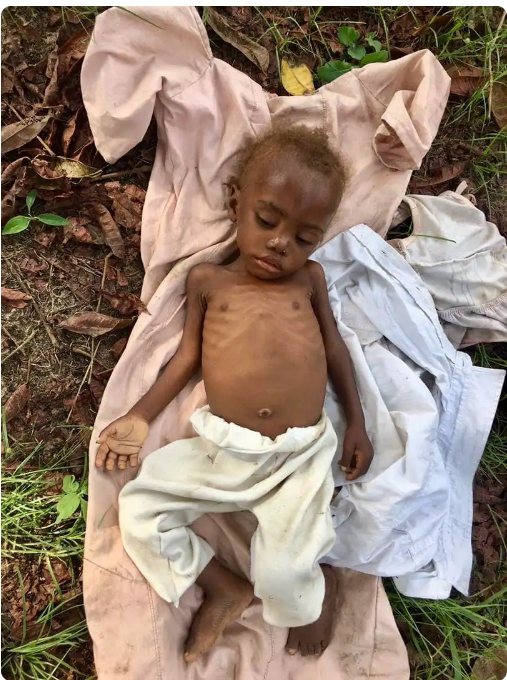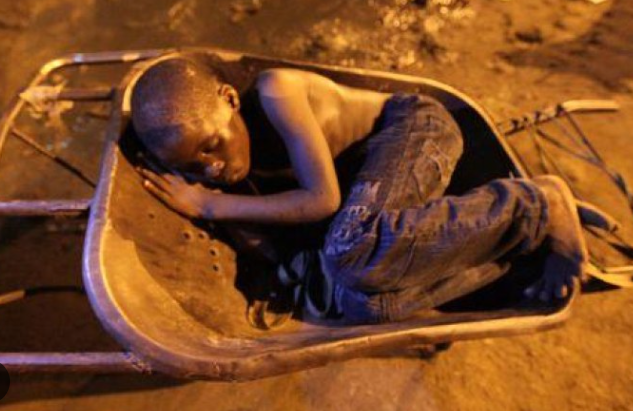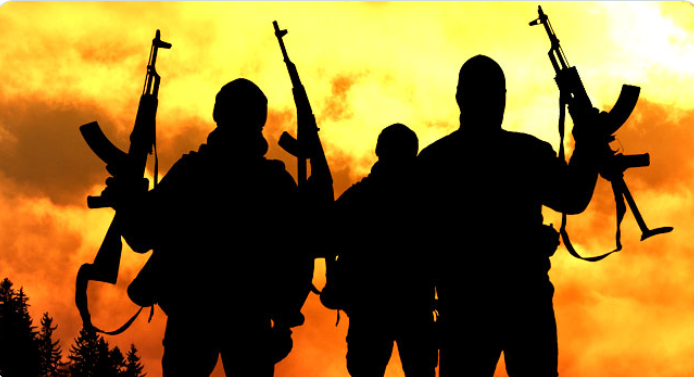By Joke Kujenya
IN A CHILLING narrative of survival against the backdrop of superstition and cruelty, in the past recent years, events in Akwa State have shed light on the harrowing ordeals faced by children accused of witchcraft.
Led by the indomitable Danish humanitarian, Anja Loven Ringgren Loven, a team of rescuers embarked on a mission of mercy that uncovered the grim reality of abandonment and persecution.

The rescue operation, unveiled by Loven on Thursday, March 28, 2024, recounted the desperate plight of a severely malnourished young girl, abandoned and left to perish in the wilderness.
Recounting the distress call that spurred their action, Loven painted a vivid picture of the dire circumstances in which they discovered the helpless child.
“Suddenly, we received a distress call from a village, urging us to rescue a little girl in an extremely critical condition,” she revealed.
Joined by the Land of Hope Director of Child Development, Orok, the rescue team braved the unknown to reach the location of the abandoned child.
What they found was a heart-wrenching testament to the tragic fate often befalling children labeled as witches.
“Little did we anticipate the extent of her suffering. She is approximately 1-year-and-a-few months old,” Loven recounted, her voice tinged with sorrow.
Yet, this tale of survival is not isolated.
In the dark recesses of Atakidiang Ebughu, a community in Mbo Local Government Area, a different kind of horror unfolded.
Effiong Ita-Freddy, a mere 10 years old, became a victim of familial betrayal, accused of witchcraft by those meant to protect him.
Gathered together to witness his torment, Effiong’s family subjected him to unspeakable torture, culminating in a horrifying execution. His crime? Alleged witchcraft, a charge that sealed his fate in the most gruesome manner imaginable.
As Effiong’s family watched his agonizing demise, witnesses to a macabre spectacle, the echoes of his screams reverberated through the community, a stark reminder of the brutality inflicted upon innocent lives.
Effiong’s siblings, Faith, Alice, and Vikky, reportedly bore witness to his suffering, their young lives forever scarred by the trauma of loss and persecution.
Yet, theirs is not an isolated tale.
In the shadows of Akwa Ibom State, the Ita-Freddy siblings reportedly found solidarity with others who endured similar trials.

Iyanam Okon Iyanam and Ulu Okon Iyanam, siblings marked by accusations of witchcraft, bore physical scars of their torment, their innocence tarnished by the cruelty of superstition.
Their stories, intertwined with those of Mary Odion and Ekong Asua, reveal a pattern of abuse and neglect perpetuated by unfounded beliefs in witchcraft.
Mary’s uncle’s death and Asua’s parents’ passing became the catalysts for their persecution, thrusting them into a nightmare of violence and rejection.
As the rescued children seek solace and healing, their voices resonate as a poignant reminder of the resilience of the human spirit. In the face of unspeakable cruelty, they emerge as beacons of hope, their stories a testament to the enduring power of compassion and solidarity.
Amid the darkness of superstition, the light of humanity shines brightest, illuminating a path towards justice and redemption for those unjustly accused and forsaken.
As the sun sets on the bustling streets of Uyo and Calabar, a chilling epidemic festers in the shadows, casting innocent lives into the abyss of superstition and cruelty. In a heart-wrenching journey of survival, children branded as witches navigate a harrowing landscape fraught with abuse, abandonment, and the quest for redemption.
Venturing beyond the confines of Uyo, our correspondent uncovered a parallel narrative of anguish and despair in Calabar. Despite legislative safeguards like the Cross River Child Rights Law 2009, the specter of witchcraft accusations looms large, defying the protections meant to shield vulnerable children from harm.
In the labyrinthine streets of Calabar, Victor Emmanuel, Lawrence Sylvester, and Clement Okon emerged as survivors of a brutal tradition that knows no bounds.
Their scars, both physical and emotional, bear witness to the atrocities inflicted upon them by those meant to nurture and protect.
Victor, bearing a scar etched upon his head, recounts the torment unleashed by his own grandmother, accusing him of thwarting her trade fortunes.
Lawrence, his voice quivering with suppressed anguish, narrates the relentless onslaught of beatings and abuse at the hands of his own parents, driven by misguided beliefs in witchcraft.
Yet, amidst the darkness, a glimmer of hope emerges. Clement’s resilience, buoyed by the kindness of strangers, offers a ray of light in a sea of despair.
His determination to defy the stigma of witchcraft and become a pastor underscores the indomitable spirit of innocence seeking redemption.
But the horrors of witchcraft accusations extend beyond mere physical abuse. Edidiong Ben’s tale, tinged with tragedy and betrayal, serves as a stark reminder of the depths of depravity to which superstition can lead.
Cast out by his own father, accused of witchcraft alongside his brother, Edidiong’s ordeal plunges into the depths of human cruelty.
Rescued by the Child’s Right and Rehabilitation Network NGO, Edidiong’s journey towards healing is fraught with challenges, his spirit scarred by the trauma of abandonment and torture.
Yet, amidst the darkness, a glimmer of hope emerges as organizations like CRARN offer sanctuary and solace to those discarded by society.
But amid the tales of horror and despair, a beacon of hope emerges in the form of a two-year-old child aptly named Hillary. Abandoned and left to the mercy of the elements, Hillary’s resilience and innocence serve as a testament to the power of compassion and love.
Nurtured back to health by the African Children’s Aid, Education, and Development Foundation, Hillary’s journey towards recovery embodies the triumph of the human spirit over adversity. Surrounded by caregivers who offer love and acceptance, Hillary’s laughter echoes through the corridors of the center, a testament to the resilience of innocence amidst the darkness.
As Hillary’s story intertwines with those of countless others, a narrative of hope emerges amidst the shadows of despair. In the face of unspeakable cruelty, the human spirit endures, a beacon of light in the darkest of nights.
Reacting to the branding of children as witches and their attendant torture or death in the state, authorities vow action.
Police and government officials in Akwa Ibom take a stand against the brutal practice, emphasizing children’s rights and warning against mob violence.
In an exclusive report, the harrowing stories of children like Goddy shed light on the alarming trend of child witch accusations and the dire consequences they face.
Despite efforts by organizations like BRCI and Way to Nations, challenges persist in reuniting these children with their families, highlighting the deep-rooted stigma and fear surrounding witchcraft accusations.
Nigeria grapples with the fallout of sensationalized beliefs fueled by films like “End of the Wicked,” raising questions about the role of media in perpetuating harmful stereotypes.
As the nation confronts this complex issue, advocates and officials alike call for a united front to protect vulnerable children and combat the scourge of child witchcraft accusations plaguing communities nationwide.
At JKNewsMedia, our dedication to delivering reliable news and insightful information to our cherished readers remains unwavering. Every day, we strive to provide you with top-notch content that informs and enlightens. By donating to JKNewsMedia, you directly contribute to our mission of delivering quality journalism that empowers and informs. Your support fuels our commitment to bringing you the latest updates and in-depth analysis. Let's continue to uphold the highest standards of journalism and serve our community with integrity and dedication. Thank you for being a part of the JKNewsMedia family and for your ongoing support.






This is great. More grace.
Thank you so much for your encouraging words sir.